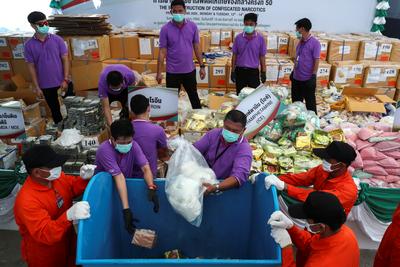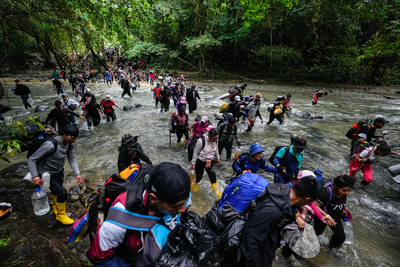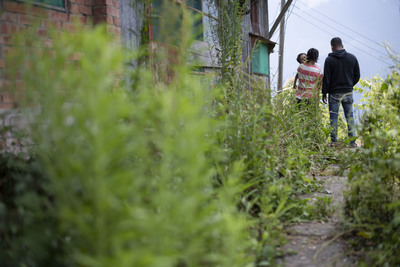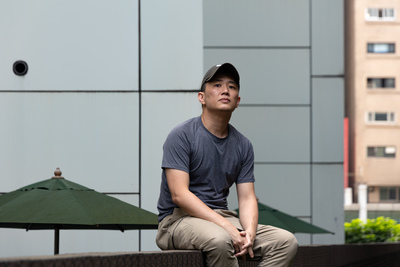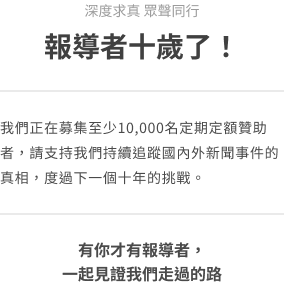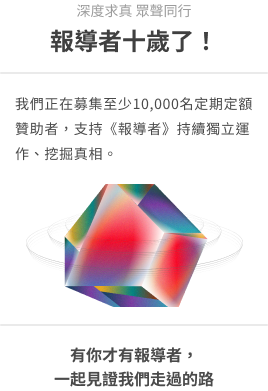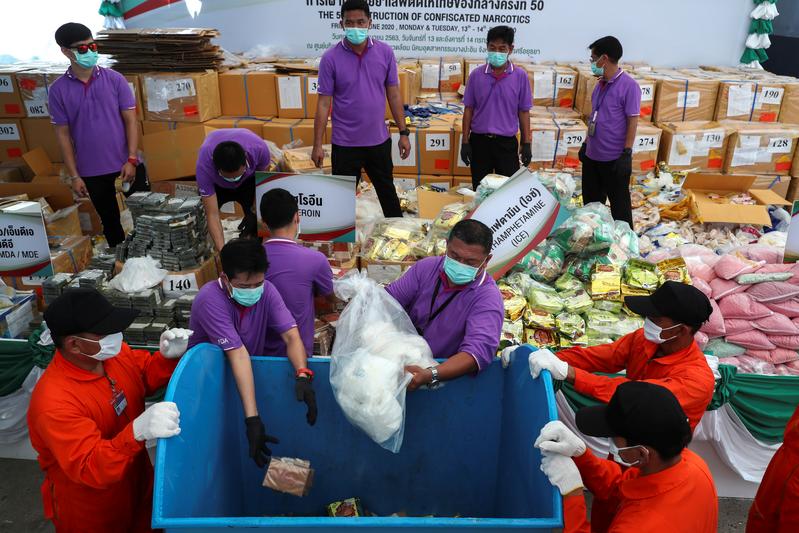
Within only five to six years, the production hub of methamphetamine has moved from the coastal areas of Guangdong, China to Shan, Myanmar—the market is spinning out of control. The transnational drug distributors have been trafficking the deadly drug in the fashion of a “thousand-mile long march,” from the Golden Triangle to Taiwan and the rest of Asia-Pacific.
In the past five years, the scale of investigations and seizures involving Taiwan’s cartels has continued to expand internationally. In Taiwan alone, annual arrests for meth consumption have grown rapidly from around 20,000 to over 30,000.
In the drug trade route, each country handles a respective role. Taiwan’s cartels have not only absorbed drug makers, gangsters, and fishing vessels for international trafficking; they have also mastered the art of sales and marketing—they are effectively running a “one-stop shop” for the drug industry’s supply chain. The United Nations Office on Drugs and Crime (UNODC) has noted Taiwan’s strategic significance in Asia’s drug production and consumption. Countries including Australia, Japan, and Indonesia have also begun paying attention to drug traffic from Taiwan’s cartels and fishing vessels.
In the face of these ever-intensifying drug trade problems, former drug prosecutor Wang Chieh-to (王捷拓) pointed out the absence of a unifying drug enforcement agency in Taiwan. He told The Reporter, “Which one is the organization responsible for overseas investigation? Which government institution oversees [drug enforcement]? There’s none.”
How would Taiwan tackle the intricate Asia-Pacific drug trade?
Under the scorching sun that pierces into the tropical rainforest, the soldiers rolled their sleeves up, trying to feel slightly more comfortable in their drenched uniforms. During breaktime, many of them put their rifles aside to enjoy the leisure of lighting up a cigar.
Hidden in the mountains of northern Shan State, Myanmar, a chemical factory guarded by these anti-government soldiers is a lawless nation within a nation.
While the soldiers outside of the factory chat in their native language of Shan, voices speaking in Taiwanese Hokkien are coming from the inside. A few Taiwanese holding beakers and flasks are focused on mixing raw chemical liquid. These drug makers are rushing to cook up "ice", a substance also known as crystal meth.
In a few months, these products would cross 4,000 km to reach the black markets in neighboring countries. They will arrive in the hands of drug users through multiple layers of traders and middlemen.
The regional drug trade involves people from Hong Kong, China, Thailand, Malaysia, Myanmar — but Taiwanese influence should not be neglected.
At the end of November 2019, Hsiao Ruei-hao (蕭瑞豪) from the Criminal Investigation Bureau (CIB) and Lu Jyun-hong (盧俊宏) from the Drug Investigation Agency formed a team visit to the Golden Triangle, where they exchanged information with the local drug enforcement unit. The team traveled through the Thailand-Myanmar borders and paused in the Truong Son belt in Thai territories. They could see a small village a few kilometers away, in the direction of Myanmar, and they heard that was the essential path to smuggle meth from Shan to the external borders.
They thoroughly investigated the valley and the direction of the roads in an attempt to answer this question: What role do Taiwanese play in the vast process of drug trafficking in Asia-Pacific?
A report has cleared some of the confusion for the police officers.
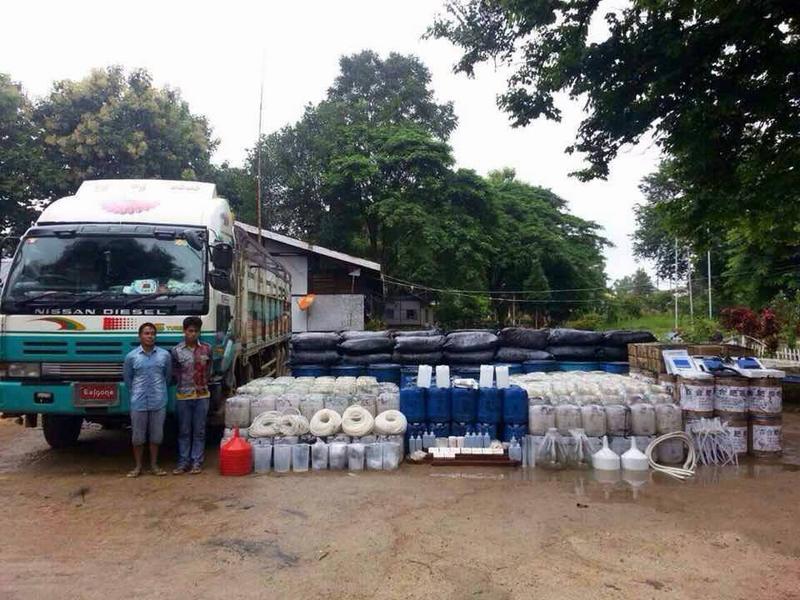
In March and July 2019, the UNODC office in Bangkok released two reports titled “Synthetic Drugs in East and South-East Asia” and “Transnational Organized Crime in Southeast Asia: Evolution, Growth and Impact.” Both named Taiwanese transnational organized crime (TOC) groups as having a “significant role” in meth manufacturing and trafficking in the region.
But what does the “significant role” mean? To understand the reasoning, The Reporter interviewed Sim Inshik, a UNODC researcher who co-wrote the reports.
In a video interview, Sim explained that the 2019 reports named Taiwan for the first time because the Taiwanese drug makers in Shan are among the most skilled, and they play an important role in the region’s meth supply chain.
There is evidence to prove Sim’s point. In 2015, a few trucks carrying 26 tonnes of ephedrine, a drug used for synthesizing meth, was seized near the Thailand-Myanmar border. Three Taiwanese drug makers were caught with the fleet. This was the first time Myanmar discovered Taiwan’s cartels were involved in the drug manufacturing and trafficking in Shan.
Not only drug makers, Taiwanese are also smart drug traffickers.
In an interview with Tempo, an Indonesia-based magazine working in partnership with The Reporter, Heru Winarko, the head of Indonesia’s National Anti-Narcotics Agency, pointed out that the drugs entering Indonesia are from Myanmar instead of Taiwan. However, Taiwanese fishing vessels were responsible for most of the drug transit, he said. Among the 123 criminals who had been sentenced to death in Indonesia because of drug trafficking, 21 of them were Taiwanese — one-sixth of the total.
In the last five years, Taiwan’s drug cartels also broke records one after another. In 2016, Taiwanese suspects were arrested for smuggling 600 kg of meth into Okinawa, the largest drug bust in Japan’s history at the time. In 2017, Taiwanese suspects smuggling over 1,000 kg of meth into Indonesia were arrested, also breaking that country’s record for its largest drug seizure. In 2018, police in Incheon busted South Korea’s largest-ever drug trafficking operation, which was traced back to Taiwan’s cartels as well.
Taiwanese drug traffickers in the Asia-Pacific, however, have only gained prominence in the past five years, mostly due to major production hubs moving from Guangdong to Shan.
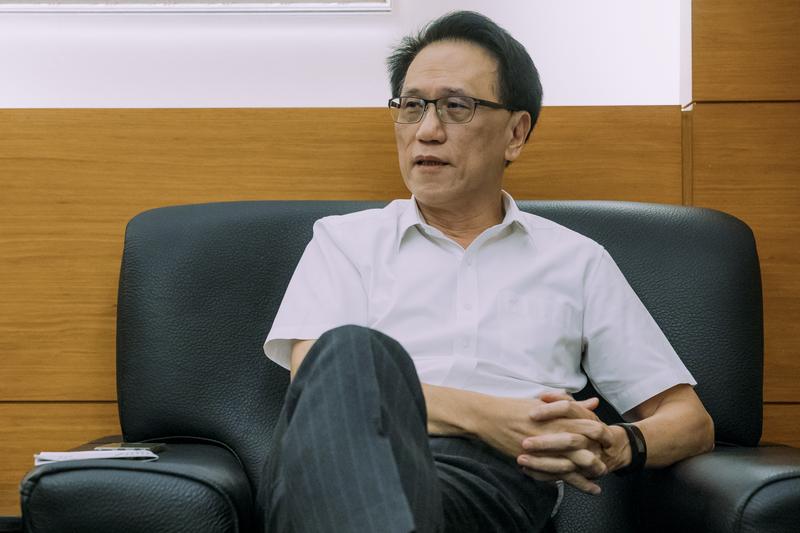
“Risk is the soul of the drug trade, only when you avoid risks can you profit,” said Shan Pei-hsiang (單培祥), a research committee member at the Department of Substance Abuse Control and Prevention.
Shan, who also directed the Investigation Bureau's drug control and prevention division for over 20 years, noted the root cause of the recent changes in the meth supply chain in Asia-Pacific.
Since 2014, crystal meth has flooded into the region in massive volumes.
“In the past, seizing a few kilograms was already considered a big case, but now it’s common to seize over a thousand kilograms,” Shan said.
Production rapidly moved to the mountains of Shan State from Guangdong, where almost the entire coastal village of Boshe village had been involved in the making and selling of drugs, leading to it being nicknamed the “Breaking Bad” village. But it was wiped out in a raid by over 3,000 police in early 2014.
After the drug village was squashed, the profit-chasing drug cartels gradually relocated to a place inaccessible by state power — the mountains of Shan, Myanmar — a region long guarded by ethnic armed groups.
“That is a place without risks. You can make as many drugs you like — several kilos, several tonnes… You have de facto protection from the local government (the paramilitary groups). The situation now is much worse than what it was in China because there is no law governing the production,” Shan said, adding that this key change has also reshuffled the entire drug market in Asia Pacific.
According to the UNODC annual drug report, the Asia-Pacific drug market was valued at US$15 billion (NT$450 billion) in 2013. By 2019, the market grew nearly fourfold to US$61 billion (NT$1.8 trillion).
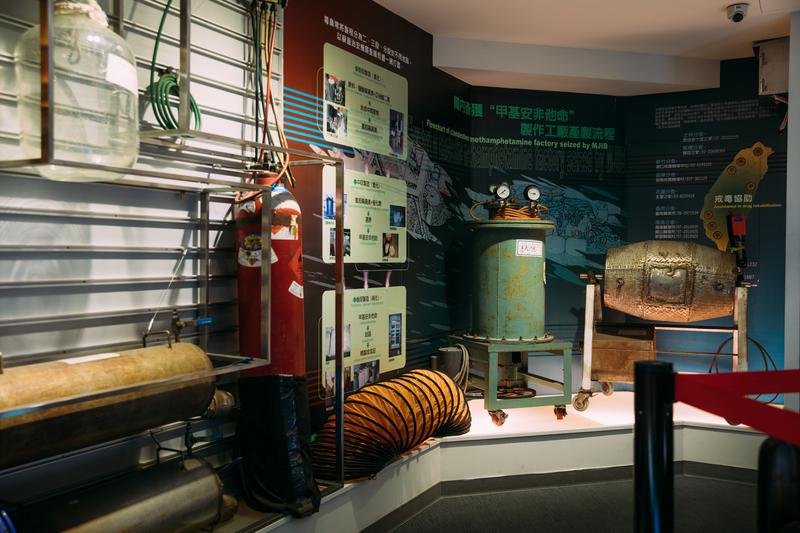
Changing the location not only lowered the risks of meth production but also changed the drug transit method.
When the meth production hub clustered around coastal villages in Guangdong, each transit mainly consisted of dozens of kilograms hidden between cargo on ships destined for Taiwan, South Korea, and Japan. Because of the shorter distances, the shipments were more frequent.
However, as the production homebase moved into the remote area of Shan, the sea voyage jumped from several hundred kilometers to over a thousand. The longer distance also made drug trafficking much riskier. The drug cartels then came up with ways to increase their production volume to compensate for the higher risks, leading to a steep climb in numbers.
A 2019 investigative report by Reuters discovered a transnational crime syndicate, involving leaders from Taiwan, that became notorious for “guaranteeing” drug deliveries. If drugs were seized during transit, the syndicate would absorb the losses and make another shipment until it reaches the final destination.
Although transnational trafficking has transformed into some sort of “thousand-miles long march,” the cartels could still bypass lax law enforcement in Mainland Southeast Asia with bribery and ship the drugs to Oceania and Northeast Asia. Hsiao, the CIB official who visited the Golden Triangle in 2019, noted that the cartels only need to fulfill two out of 10 shipments to break even. And the success rate in reality is much higher. This is one of the main reasons crystal meth has flooded into so many parts of the Asia-Pacific after 2014.
Unregulated drug factory and increased production encouraged the cartels’ recklessness.
Sim pointed out that the drug syndicates in Asia do not see a single country as a market, but they see the entire Asia-Pacific region as an integrated market. Unlike the Hollywood movies, where cartels have complex hierarchies or murder their competitors, the syndicates within this market often collaborate and make money together.
“The sources at the top, especially, are businesspeople, not some violent gangsters,” Shan explained, adding that the drug supply chain is split into many small parts with specific roles.
After a client pays for an order, the drug makers cook up the products in the mountains of Shan and pass them onto “transportation” — people who are responsible for delivering the drugs through fishing vessels. As shipments arrive at their destinations, local crime organizations pick up the drugs and take over sales. However, everyone in this chain is usually unaware of the existence of the others and focused only on individual assigned duties. The groups of various nationalities and functions work as a frictionless assembly line, making investigations extremely difficult for each local law enforcement unit.
Due to dramatically lower drug manufacturing risks and faster production, supply volume has shot up exponentially. The supply influx led to a price drop, meaning a lower barrier for meth consumption. The discounted sales are almost like a cheap auction of drugs, benefiting both suppliers and buyers.
The user demographics are also changing: meth has grown more popular among working adults and college graduates. The Taiwan High Prosecutors Office has also repeatedly emphasized that amphetamine is a major drug problem in Taiwan and there is a need for dedicated policy to address the issue.
But the drug’s corrosive effects damage the central nervous system in the long run, impacting not only productivity but quality of life, along with incurring inestimable costs on families and societies.
Governments in Asia are pouring efforts into drug enforcement, declaring a war on drugs, burning dozen tonnes of them at once. News of Indonesian and Philippine authorities killing drug traffickers on sight frequently make international headlines. Yet authorities have not been able to crack down on drug traffickers in a market with supernormal profits.
A former drug trafficker told us that the products mostly reach Taiwan via Wuqi Fishing Port in Taichung or Donggang Port in the south. Once the cartels receive the notification of docking, a dozen sedans would rush into the port area to receive the goods. On the nights that shipments arrive, the middlemen send out their underlings to sell and deliver the goods in a car or a scooter. It only takes one night for the bottom of their car seats to be filled with stashes of cash.
Because of the massive profits, drug syndicates including those in Taiwan want a slice of the cake in Shan.
In Asia-Pacific’s meth storm, Taiwan’s TOC groups were not only named by the UNODC, but also the Philippines.
In the past three to four years, Philippine President Rodrigo Duterte launched successive waves of anti-drug enforcement operations. But in 2017, amid the smoke and blood that arose in the name of Duterte’s “drug war,” the president blamed Taiwan for the problem.
“They (Taiwanese drug cartels) made Shabu (meth) in the international waters, then tossed them into the sea. Each empty crate with written Chinese characters have in fact come from Taiwan—all of them,” Duterte said at an event celebrating the 120th anniversary of the Philippine Department of Justice.
Duterte openly accused Taiwan of getting involved in the drug trade and turning the Philippines into the drug transit center of Asia. Yet who are these Taiwanese that Duterte referred to?
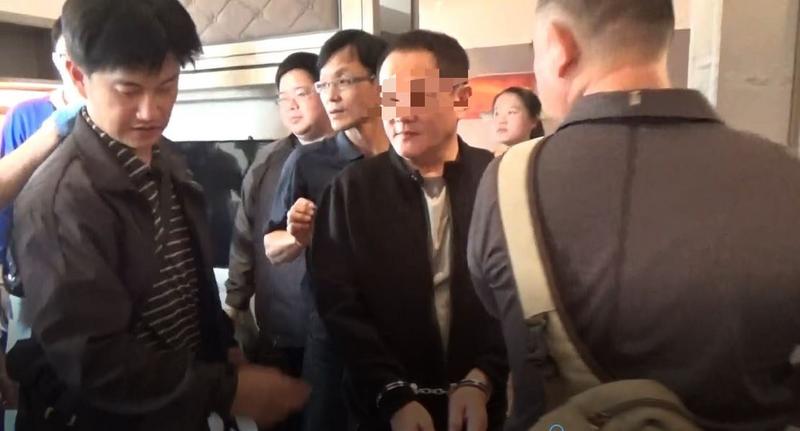
A senior drug enforcement official told us that the one-stop business model, from ordering to smuggling to selling, has raked in massive profits for the international drug lords in Taiwan. Among them, the most notorious one is Lin Hsiao-tao (林孝道).
From communicating with producers in the Golden Triangle, to transferring drugs at sea, to snatching arriving shipments and selling them to local buyers, Lin has built a comprehensive drug trade network.
“Most drug dealers take cash, but not Lin Hsiao-tao. He takes 15% share of the entire shipment because he can take care of the shipping and delivery in a seamless operation,” said Huang Rong-de (黃榮德), chief prosecutor at the Taitung District Prosecutors Office, who has dealt with Lin’s case.
Lin had been a major target for domestic drug enforcement units for years. The required notices of surveillance from Taiwanese law enforcement he received each year took the form of dictionary-sized books containing meticulous records of his conversations — indicating the effort put into catching him.
Taiwan’s highest ranking police officer, National Police Agency Director Chen Ja-chin (陳家欽), handled Lin’s case while he was in the Kaohsiung Criminal Investigation Corp in 2000. Chen has hunted down many criminals in his long career, but Lin was always his primary target.
With efficient ways of drug trafficking, Lin expanded his market from Taiwan to the world.
The CIB’s third division specializes in cracking down on transnational drug trafficking. Through years of investigation, the unit discovered that Lin’s tentacles have reached Asia’s largest drug production hub: Shan State in Myanmar.
Taking advantage of his friendly connections in Shan, Lin sold the drugs to China, Japan, South Korea, Australia, Pakistan, Sri Lanka, and the Netherlands. He even made contacts with the drug cartels in Central and South America in an attempt to expand his markets. The one-stop business model of Lin’s drug trafficking not only created headaches for the CIB’s third division, but also for the Philippine government and drug enforcement units in the United States, Australia, Thailand, and Japan, among others. They have been watching his every move.
Lin’s one-stop drug trafficking operation provides a glimpse into the role Taiwanese play in the Asia-Pacific drug supply chain.
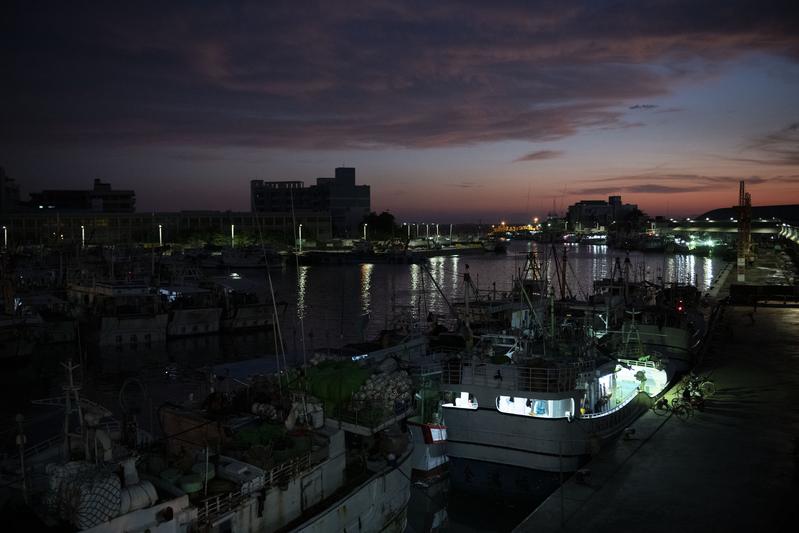
Chen Chung-yi (陳忠義), chief investigator of Pingtung’s Ligang Police Department, is in his early 50s — around the same age as Lin — and has witnessed nearly the entire career path of the notorious drug lord.
In the late 1980s, Chen said, Lin was merely a young thug who made his living through gambling. Taiwan’s economy was roaring and people were walking around with cash in their pockets. Lin realized that everyone had money to burn and hatched a plan to earn his share with gambling scams.
He lured in wealthy youngsters to play rigged mahjong games and dice, making them sign large cashier’s checks before taking bets they were bound to lose. For those who could not afford to pay, Lin kidnapped them for ransom. He soon accumulated millions of dollars and invested into the drug trade.
Around 2000, Lin became an expert drug maker through the teachings of Taiwanese masterminds. He went on to Southeast Asian countries to make amphetamine while building his own drug trade network. He was not fluent in local languages, but the quality and purity of his products earned him a reputation and he quickly made a fortune. His presence was such a boon for the business of local drug cartels that they wanted him to stay. At one point, they even tried to prevent him from going home.
After finally making his way back to Taiwan, armed with foundational skills and a financial warchest, Lin quickly expanded to sales. He visited Donggang to buy ships, most of which were gigantic fishing vessels typically used for distant water fishery. He bought five or six of them and partnered with the captains in Donggang and Lambai Island. With experienced captains and a sizable fleet of vessels, Lin’s transnational drug trafficking business brought him even greater wealth.
“Not a lot of people were driving Bentleys in Pingtung then,” Chen said. “Lin felt unhappy that someone else bought the car before him, so he bought two at once, in cash.”
With the stacks of cash earned from trafficking, the drug lord poured more money into building relations with politicians and businesspeople. He even wanted to mimic Cheng Tai-chi (鄭太吉), a gangster-turned-politician, to run for councilor in Pingtung County. But he eventually gave up the thought because it would have exposed his extensive record of drug- and trafficking-related cases.
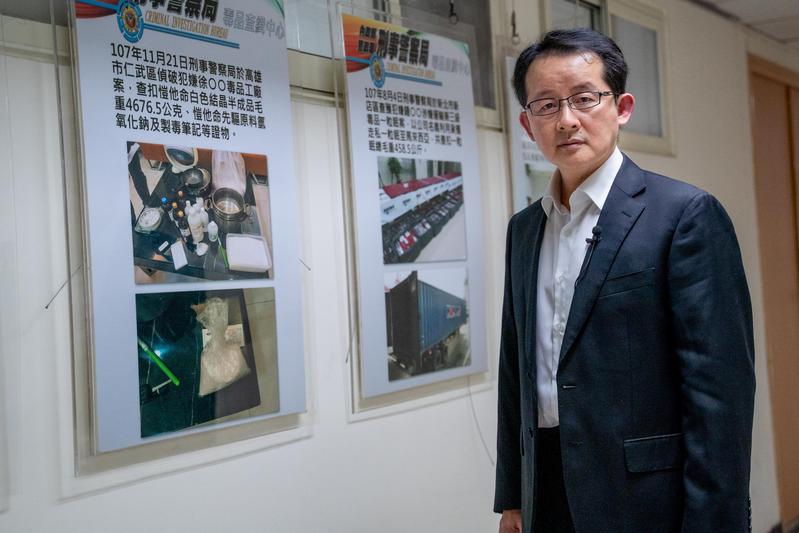
Lin’s high-profile behaviors put him firmly in the crosshairs of law enforcement. But in their cat-and-mouse game, he swiftly maneuvered the different worlds of mafia, business, and politics while setting up cutoff contact points for self preservation. In two major drug busts last year, Lin played a key role behind the scenes.
In May 2019, Taitung District Prosecutors Office seized 829.44 kg worth of amphetamine on a mid-sized fishing boat (藍悅號). A few days later, authorities found 627.92 kg of ketamine on another fishing boat (金海銘號). The combined 1,500 kg worth of drugs made up the country’s largest drug busts ever, and the drug dealers surnamed Chang and Liao were arrested, along with their groups.
The two cases involved different drug cartels and different types of drugs. While they seemed unrelated to each other, they were both traced back to Lin after further investigation. Hsiao, who assisted in the cases, found that the contacts and sources in both busts came from the same group of overseas Taiwanese. Even the sea trafficking was taken care of by Lin.
Drugs smuggled via mid- and large-sized fishing boats continue to pour into Taiwan’s black markets. According to the police, Lin has been involved in at least four large-scale drug trafficking cases with over 3,000 kg of drugs, most of which were amphetamine.
“He alone has occupied one-third of Taiwan’s sources of drugs,” Chen said brusquely at a press conference after the drug bust. CIB statistics show that 7,992 kg of drugs were seized in 2018. Lin alone would have accounted for smuggling over 2,600 kg of them into Taiwan—enough to provide for 10 million people.
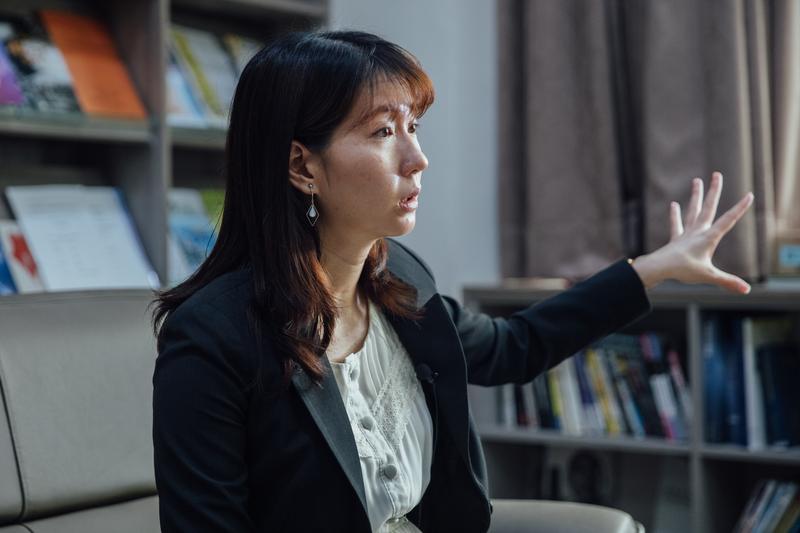
Through the drug business, Lin accumulated several hundred billions of Taiwanese dollars worth of assets. This allowed him to make generous offerings for all kinds of talent and build a drug empire with a specialized division of labor.
During the trials, Taitung prosecutor Hsu Tsui-hua (許萃華), who had been on Lin’s case, revealed that Lin’s drug trades were often transnational. He needed local language speakers to help with communicating the time, price, and location for the exchanges. He thus spent a lot of energy scouting for bilingual talent who could speak Japanese, English or Burmese, and he paid a good monthly salary to attract these people into the drug trade.
Aside from working towards specialization, his drug network boasted a high level of structural mobility. Labeling himself as the King of Pingtung, Lin took a few dozen underlings under his wing, nearly all of whom had been trained since they were teenagers. They were tasked with shouldering the biggest risks in the process of transiting drugs. The size of his “army” also reduced the possibility of betrayals, making the trade even more seamless.
Moreover, transnational trafficking mostly involves various countries, which demands workers who can arrange cross-border transit. Lin established a base at the border intersection between Myanmar, Laos, Thailand, and China, then recruited a band of fearless outlaws and sent them to different locations as contacts to ensure smooth sailing.
A big part of Lin’s success in building such a meticulous, sizable crime organization was because he often lent a helping hand to people who were in dire need of monetary assistance, Hsu explained.
“For instance, he would give money to fugitives who are on the run to help them start fresh in other places, and he would even take care of their family,” she said. “It was common for him to offer 30,000 or 50,000 or even 100,000 at once, so monthly expenses for his underlings alone cost at least 3 to 4 million dollars. Of course these people who were indebted to him were willing to give their life for his work.”
As someone who would navigate through the jungle, Lin did not neglect the fact that drugs are often accompanied by guns. To protect his drug empire, Lin used the revenue from his fishery companies in the Philippines to acquire weapons and hire dozens of rebel soldiers from Mindanao, an island in the southern Philippines. His ships were equipped with rifles, pistols, grenades, and rocket artillery. In recent years, he started buying these weapons and services with the vast profits from his drug trade.
These rebel soldiers, armed with immense firepower, made for great companions to Lin over the years. He called them “puppets” because they strictly followed orders: if anyone came near their ship on international waters, they would treat it as a robbery and kill everyone without question. This has eliminated most obstacles during the drug transit.
To improve the operation of a drug network that spans 4,000 km from the Golden Triangle to places like Japan and Korea, Lin strategized his labor placements and set up cut-off points. Each mission team only knew of its own duties and promised to keep information sealed. This has formed a classic “dead drop,” a practice that secures information exchange without giving away the sources, which makes it extremely difficult for the police to capture all the suspects, drugs, and cash flow at once.
In order to dodge investigations, Lin even concealed his distant fishery fleet under the guise of legal protection. Taking professional advice into account, he registered most of his ships in inland countries such as Mongolia or Bolivia or used a third-party vendor to register in Panama. Without any monitoring from the ship’s registered countries, Lin’s fleet essentially consisted of “ghost ships” that trafficked drugs on sea unbounded by law.
Among his fleet, the biggest vessel weighed 700 tons with a desalination system onboard and armed with Philippine rebel soldiers. The ship became semi self-sufficient, rarely requiring shipments of supplies, and would sail for over 300 days in a given year. Lin saw this ship as a relay station at sea; a “maritime fortress” for drugs.
Using distant water fishing vessels to smuggle drugs is not exclusive to Lin. Earlier this year, authorities successfully captured a drug lord who controlled drug sales in northern Taiwan and used the same methods to run his drug trafficking business in countries like Laos, Cambodia, and Vietnam.
Lin and his fellow Taiwanese drug lords have created a disruptive drug supply chain in Asia via countless sailing routes originating in northern Myanmar. They have left deep traces along the drug trade route in Asia, which explains why Taiwanese TOC groups were named as a key player in the region.
To clarify the impact of Taiwanese organized crime groups on different countries, The Reporter reached out to the Japanese liaison officer in Taiwan and U.S. Drug Enforcement Agency officials stationed in Taiwan. Due to concerns over information security, they could only give us answers by the book:
“Japanese and Taiwanese law enforcement units are working with each other closely” “DEA thanks Taiwanese partners for their contributions in bilateral and multilateral investigations.”
This unique transnational cooperation in the drug trafficking industry has alarmed officials in destination countries including the U.S., Japan, and Australia. In recent years, they have been proactively strengthening their cooperation efforts with Taiwan.
American and Japanese officers are stationed in Taiwanese because they discovered the significant Taiwanese presence in the Golden Triangle — they are not just taking high risks to produce drugs, but they also take advantage of distant water fishing vessels to earn the highest returns.
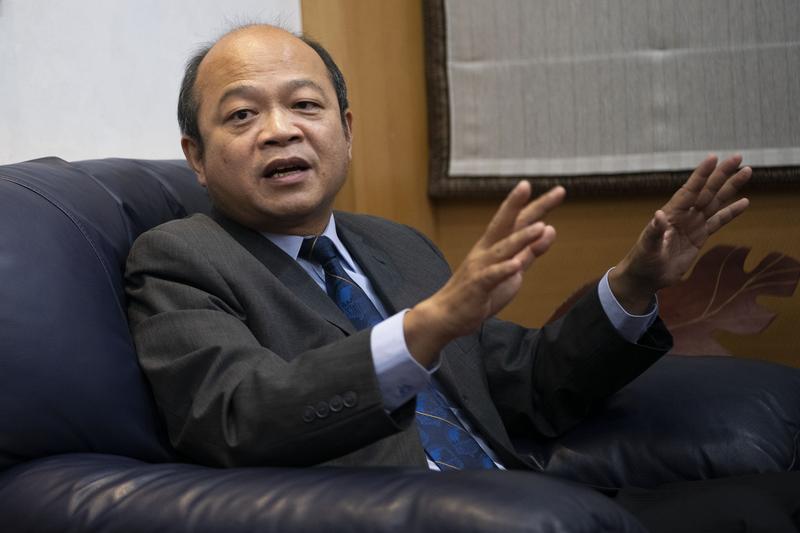
Having lived in Bangkok for 12 years, Patrick Winn is a journalist who has reported on drug-related stories in Myanmar and authored the book “Hello, Shadowlands” on drug crimes in Southeast Asia. In an interview with The Reporter, Winn explained that the meth situation today is related to the history of the Kuomintang (KMT) in Burma.
Traces of this part of history can be found in Mae Salong, the center of tea plantations in Thailand. In 1994, Taiwan’s Ministry of Justice Investigation Bureau sent its first legal secretary on a mission in Chiang Mai. He was instructed to closely monitor Mae Salong, where 60-70% of the world’s heroin was produced around the end of the 20th century. Heroin from the area was exported in the form of bricks that were stamped with “Double UOGlobe Brand,” indicating the high level of purity of the products.
He Zhong-zheng (賀宗正), chief of the Investigation Bureau’s Office of International Affairs, had been stationed in Thailand in 2000. He said the KMT government in Mae Salong left behind lone armies under the command of Khun Sa and Lo Hsing Han, both of whom were also notorious drug lords. They planted massive fields of poppies to extract heroin, harvesting crazy profits to compensate for military expenditures. The two Chinese descendants built a local kingdom of their own.
“At that time, if you spoke Chinese in northern Thailand, you would be suspected of illegal trade, especially that of drugs,” He said. “A lot of [Chinese-speaking] folks were shot, assassinated, or [had grenades hurled at them]. I had to always sit at tables facing the exit when I dined in restaurants and maintained awareness of my surroundings.”
His job as a legal secretary was to send intelligence on local Chinese in Thailand to Taiwanese authorities. He was also tasked with cooperating with Thai drug enforcement units. Mutual trust between Taiwanese drug enforcement units and the Thai government was weak, so the legal secretaries were entrusted with building and developing those relationships. He added that, in his three years of being stationed overseas, he had visited Myanmar a dozen times to befriend Myanmar’s military government, which was extremely pro-China at the time.
After the Thai government took a carrot and stick approach in its anti-drug efforts, Mae Salong tried to cleanse its reputation in 2005. The descendants of the KMT army converted from planting poppies to coffee beans in hopes of improving the negative image of Chinese in northern Thailand. Because of this transition, the Investigative Bureau ended its Chiang Mai operation in 2014. The bureau set up a new outpost in Yangon, Myanmar in 2017 as the drug production hub moved to Shan State.
“90% of the population in northern Shan State speak Chinese. The transnational drug cartels that work with them also need to speak Chinese,” Winn said. He added that the Shan State Army requires military funds to bankroll its resistance against the Myanmar government, which facilitates its cooperation with the Chinese drug cartels from Taiwan, China, and Hong Kong. The army would earn its income by collecting taxes, providing labor, military convoys, or even assisting in the construction of factories.
As for the Chinese drug cartels, their payments to the army are barely scratching the surface of their giant pot of gold. Under military assistance, these drug cartels are able to build their trade network without any fears.
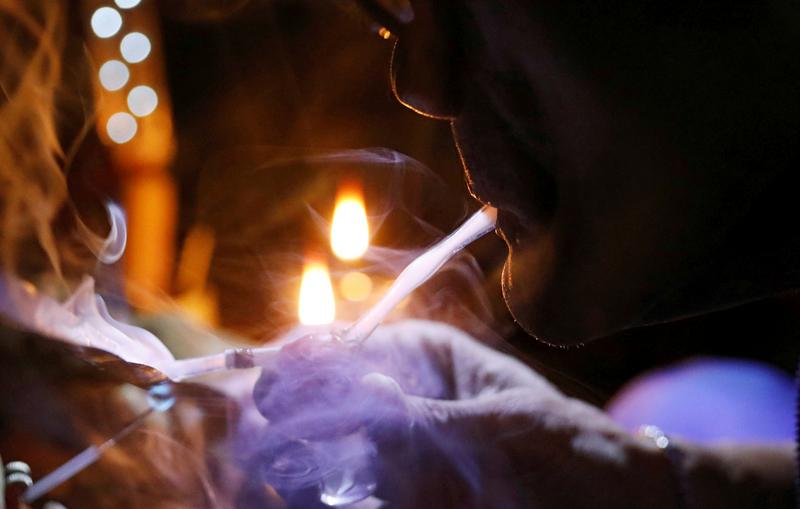
While the sly drug cartels have bounced around different jurisdictions, countries have relaunched their cooperation efforts in order to capture these modern drug pirates. In 2017, Taiwan issued its quadrennial “New Generation Anti-Drug Strategy,” which prioritized tracing drug sources and uprooting their existence. The government also initiated a series of reforms that focused on clamping down on overseas drug problems.
Lin was finally arrested earlier this year. It was a major vindication of Taiwan’s new anti-drug policy.
In February, the Taitung Prosecutors Office announced that it had dismantled Lin’s drug ring. As he was on family vacation in Hualien, police officers swamped the hotel and arrested Lin, who was still in his holiday outfit.
The bust, Chen said at a press conference, symbolized a new milestone in Taiwan’s drug enforcement capabilities. It had been impossible to trace drug sources and owners because cartels had set up breakpoints in each step. Law enforcement was only able to hit the bullseye this time through international collaboration.
Huang, the prosecutor who oversaw this case, said Lin’s arrest reflected the impact of the New Generation Anti-Drug Strategy.
Various government agencies would tackle drug cases without a unified leadership in the past, he said, and they may not have created coherent plans. Law enforcement officers often called for a press conference right after capturing a suspect, which bought time for drug lords on the top to erase any remaining evidence.
In the new strategy, Taiwan High Prosecutors Office commands all drug enforcement units in the country. This centralizes resources and powers to prevent information leaks, leaving the drug lords little room to react and drastically increasing the success rate.
“Last September, when a bunch of heroin was floating onshore, Lin was already alarmed and his strategist told him to run. But prosecutors like us didn’t take any action and he let down his guard,” Huang said.
As Lin dropped his defense, Taiwanese prosecutors partnered with Thai law enforcement to investigate Lin’s drug supplier. After multiple transnational drug conferences, Thai police locked down two Taiwanese suspects who had been traveling between Thailand and Myanmar for years. They arrested the two at immigration and transferred them to Taiwanese police. This provided more direct evidence proving Lin’s drug trafficking crimes and allowed prosecutors to exterminate his power network once and for all.
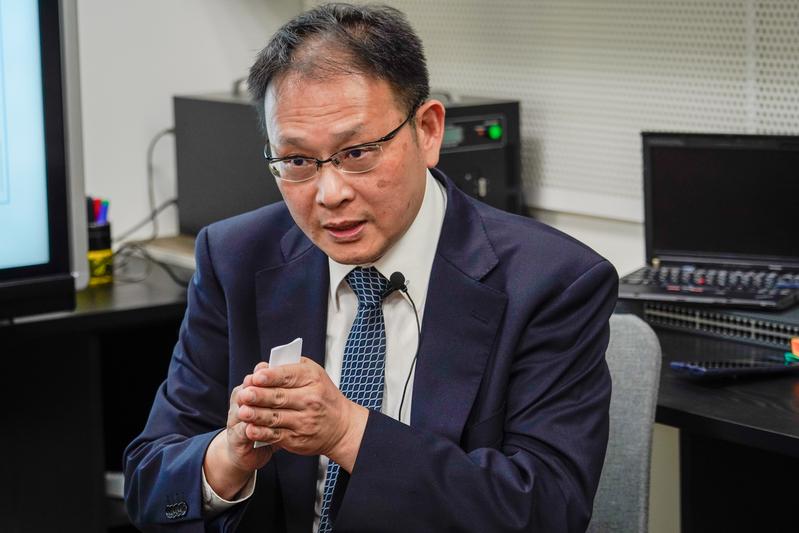
Despite Lin’s arrest, overseas cooperation has remained the achilles’ heel for Taiwan’s drug enforcement units.
Wang, a lead author of the strategy and a retired prosecutor, pointed out two major obstacles to drug enforcement in Taiwan.
The first is a culture of overcompetition among drug enforcement units. “In the last few years, everyone has been overvaluing media reputation,” Wang said. “Even if they already knew about [the drugs and the traffickers] in Thailand and Vietnam, they would not capture the targets until they arrived in Taiwan. Why?”
“If they caught [the drugs] in Taiwan, they could call a presser, [to prove] that their agency is the best one in Taiwan. No one else was allowed to bust more cases, have more media appearances. This is the biggest problem,” he added.“I’ve never seen any country with such determination to toss shit (overseas drugs) back into its home.” Editor's Note: Taiwan offers different bonuses for international and domestic cases under the “Drug Enforcement Awards and Punishment Law,” which partially explains why it is less enticing to capture the drugs outside of the borders. Article 8 of the law states that the bonus prize for resolving international cases of drug production, trafficking, sales, or possession are only 20% of that of domestic cases.
The second problem is that the structure of overseas drug enforcement units is disorganized. “Which one is the organization responsible for overseas investigation? There’s none,” Wang said. “We have too many cooks in the kitchen. Every agency wants to take the lead in overseas cases, and foreign units don’t even know who to contact. Should they look for the Justice Investigation Bureau, the Coast Guard or the Criminal Investigation Bureau?”
Wang also pointed out that although the new strategy has yielded decent results domestically, Taiwan has much room to improve when it comes to international drug enforcement. While the High Prosecutors Office can lead domestic investigations, there is no single contact window for cases outside of Taiwan’s borders. Besides, geopolitics often get in the way of mutual legal assistance between Taiwan and other countries, lowering the possibilities of cooperation.
The investigative process into Lin’s case clearly proves this problem. Since one of the suspects fled to Thailand, the CIB encountered disagreements from Thai authorities due to the lack of a mutual legal assistance treaty. The Taiwanese government had hoped that the two countries could sign a treaty that would allow extradition of the suspect, but this was met with resistance from the Thai government. The reasoning was simple: once Thailand established such a treaty, it would face repercussions from China. In the end, the two countries completed the task with a private agreement.
Among Southeast Asian countries, Taiwan has only signed some form of cooperation agreement with Vietnam, Thailand, Indonesia, and the Philippines. Most of these cooperative efforts were determined by unspoken agreements and international politics. This is also the reality of each country’s “one China policy” preventing Taiwan from working with other nations as a legitimate government.
Sim, the UNODC researcher, was also cautious during our interview to not rock the geopolitical boat. Whenever he mentioned Taiwan, he would say “Taiwan, province of China.” Even when our conversation was centered around a universal crime — drugs — geopolitical influence seeped through in a subtle but clear way. This has weakened Taiwan’s efforts in working with other countries.
Overall, to resolve overseas drug problems, Wang said, it is necessary to establish a specialized drug enforcement department.
Sweeping from Shan State to the rest of Asia, this 4,000-km-long drug supply chain in the Asia-Pacific has traversed over 10 countries and created an economic network that’s worth tens of billions of dollars. And within this network, Taiwanese organized crime groups have been a key player. How can we get rid of such a tainted reputation?
Should we establish a specialized unit and a single contact window for international outreach, or should we follow the existing system and move step by step?
When facing the meticulously built transnational drug trafficking network, government institutions are brainstorming for the best way to fill the gap, attempting to use the drug enforcement army led by the High Prosecutors Office to intercept these drug cartels.
Minister without Portfolio Lo Ping-cheng(羅秉成), who is leading this “anti-drug war,” told us that the war against drugs has never been easy.
“Sometimes Taiwan is treated as a drug trafficking checkpoint or a midstop in the Southeast Asian route,” Lo said. “But I think what we’re doing now is to cleanse ourselves of our bad name.”
He added that whether Taiwan can get rid of its drug label depends on how effective the High Prosecutors Office can be in managing the six major institutions: prosecutors, police, investigators, military police, coast guard, and customs. Taiwan’s diplomatic situation makes formal mutual legal assistance a rare occurrence, and the government can only rely on the intelligence exchange between its expatriate units and foreign countries.
To win this transnational drug war and completely cut off the one-stop drug supply chain with scarce resources, Taiwan needs community prevention and investigation measures as well as international assistance. And on this long journey, Taiwan has only begun taking its first steps.
(To read the Chinese version of this article, please click:製毒、走私、銷售,台灣毒梟「一條龍」串起安非他命的亞洲販運鏈)
深度求真 眾聲同行
獨立的精神,是自由思想的條件。獨立的媒體,才能守護公共領域,讓自由的討論和真相浮現。
在艱困的媒體環境,《報導者》堅持以非營利組織的模式投入公共領域的調查與深度報導。我們透過讀者的贊助支持來營運,不仰賴商業廣告置入,在獨立自主的前提下,穿梭在各項重要公共議題中。
今年是《報導者》成立十週年,請支持我們持續追蹤國內外新聞事件的真相,度過下一個十年的挑戰。


